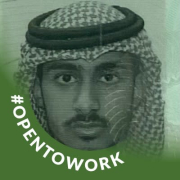VxRail is a hyper-converged infrastructure appliance co-engineered by Dell Technologies and VMware, designed to optimize VMware environments by simplifying compute, storage, virtualization, and management.



| Product | Market Share (%) |
|---|---|
| VxRail | 15.8% |
| VMware vSAN | 13.9% |
| Nutanix Cloud Infrastructure (NCI) | 9.6% |
| Other | 60.699999999999996% |
| Title | Rating | Mindshare | Recommending | |
|---|---|---|---|---|
| VMware vSAN | 4.2 | 13.9% | 87% | 232 interviewsAdd to research |
| Nutanix Cloud Infrastructure (NCI) | 4.3 | 9.6% | 94% | 199 interviewsAdd to research |
| Company Size | Count |
|---|---|
| Small Business | 34 |
| Midsize Enterprise | 38 |
| Large Enterprise | 50 |
| Company Size | Count |
|---|---|
| Small Business | 748 |
| Midsize Enterprise | 409 |
| Large Enterprise | 1580 |
Built on VMware vSAN software, VxRail ensures high performance, reliability, and flexibility. It supports a broad array of workloads, from business-critical applications to next-generation use cases. VxRail simplifies infrastructure management with powerful integration and seamless scalability, offering centralized management and user-friendly interfaces. Streamlined updates, robust lifecycle management, and one-click upgrades facilitate a user-centric experience that minimizes deployment complexity and staffing needs. However, its performance with disk deduplication, integration with public clouds, and processor support can be enhanced, along with pricing and licensing improvements.
What features define VxRail?Organizations across sectors such as finance, telecommunications, education, and manufacturing utilize VxRail for its scalability, ease of deployment, and infrastructure management capabilities. It aids in server and application hosting, storage, and virtualization management, often employing VMware integration. The platform is valued for its ability to consolidate IT components, support VDI solutions, and enhance cloud readiness and resource allocation.
VxRail was previously known as VCE VxRail .
World Wide Technology Inc, Renault Sport Formula One Team, 8x8 Inc, Brownes, Canadian Pacific, Canopy, Denton, EDF, Unilin, Xerox
| Author info | Rating | Review Summary |
|---|---|---|
| Technical architect at a manufacturing company with 10,001+ employees | 4.5 | I use VxRail to manage centralized resources efficiently with VxRail Manager and vSAN integration. The automated upgrade process is invaluable, but improvements are needed in the razoring process, which should be accessible to experienced customers. Previously, I used Quest NetVault Plus. |
| Data Center Solution Manager at a computer software company with 51-200 employees | 4.0 | I initially worked with VxRail implementation and support, eventually leading a team handling Dell solutions. VxRail's ease of management and VMware integration stand out, though upgrades demand a clean environment. Nutanix is a key competitor in the market. |
| computer scientist at Imam University | 3.5 | I've used VxRail for general VMware-based services due to its simplicity, stability, and single support line, though it lacks external vCenter support and has scalability limits, making it best suited for medium-sized workloads. |
| Principal Consultant at Sycor GmbH | 4.0 | We use VxRail for virtualization services as a Broadcom Cloud Service Provider, valuing its easy update mechanism and support for VMware and hardware management from a single source. Improving update stability would enhance its effectiveness. |
| Manager infrastructure at FNAC | 5.0 | We use VxRail for network outages and to reduce physical footprints with its low latency and virtualized environment benefits. Despite lacking a hybrid cloud solution, its ROI is clear, and it's superior to previously considered solutions like HPE and others. |
| Global IT Systems Manager at a renewables & environment company with 1,001-5,000 employees | 4.5 | We use VxRail for virtualization and server storage, appreciating its homogeneity and speed. It's better than HPE SimpliVity, which had management issues. Although less scalable than the cloud, its lower latency suits our needs despite the cost. |
| RSI | 4.0 | I selected VxRail for its scalable server virtualization, valuing the one-click upgrade despite occasional issues. Previously, I considered Nutanix and HPE but chose Dell due to its strong support and relationships, which influenced my decision over public cloud options. |
| Leiter IT at Deutsche reihenhaus ag | 4.0 | We chose VxRail for streamlined management of roughly 35 virtual machines, valuing its rapid updates and single-person operability. It suits our on-premises needs but could improve installer expertise and support resource accessibility. Cloud solutions were considered but rejected. |